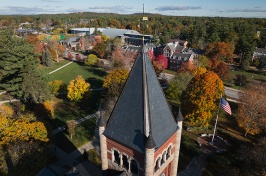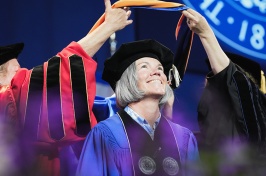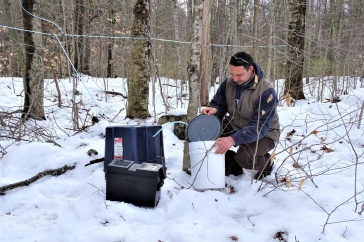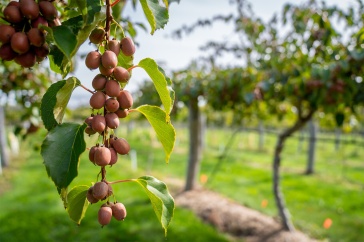
Despite offering high quality produce at farmer's markets and other venues, revenue from food sales is not enough for most New Hampshire farms to be viable.
Today, the characteristics that make a typical New England farm viable are different from what has traditionally been expected. With 80 percent of New Hampshire’s farms making less than $25,000 a year in sales, growing and selling food alone no longer pays the bills. How small and medium-sized farms in New England have adjusted is a question that New Hampshire Agricultural Experiment Station (NHAES) researchers sought to answer. Their findings, published in Agriculture and Human Values, offer a new perspective on what it means to sustain a farm in New England today: adopting new strategies that include agritourism, off-farm jobs and greater reliance on agricultural policies and grants.
Key Findings: For many New England farmers, revenue from food production is insufficient to sustain their households, increasing reliance on off-farm income or nonproduction ventures like agritourism.
From 2021 to 2022, Station scientist Analena Bruce, assistant professor in the department of agriculture, nutrition and food systems at the UNH College of Life Sciences and Agriculture, and coauthor Isaac Leslie, extension assistant professor of community development at the University of Vermont, interviewed farmers from all six New England states to understand how they sustain their farms and gather their perspectives on long-term viability.
“The interviews represented a diverse cross-section of the agricultural spectrum, showcasing varying farm sizes, product mixes, marketing channels, and proximity to urban markets,” describes Bruce. “Additionally, 26 agricultural service providers and grassroots organization leaders from the region were interviewed as part of this study.”
The findings revealed that New England farmers employ a mix of strategies to support their operations. Agritourism, mutual aid and diversification into non-farming ventures emerged as common themes. Many also relied heavily on agricultural grants, loans or inherited resources to cover costs. Most importantly, income from producing and selling food often accounted for only a small portion of their overall earnings, despite the extensive time and labor they invested in farming.
“New England farmers often make their living and support their businesses with a wide range of income sources, like off-farm jobs and side businesses, and complementary enterprises such as agritourism or hosting educational programs,” Bruce explains.
The research also found that farmers described a more complex definition of what it means to be viable as a small farm business. Traditional definitions focus on a farm’s ability to generate enough revenue from farm sales to cover expenses and provide household income. However, New England farmers in the study defined viability as staying operational year after year, preserving their farm enterprise, keeping their land in agriculture and balancing their personal and environmental sustainability.

As one farmer put it, “Can we keep this thing going? Can it help to pay for itself?” For many, this reflects the ongoing struggle of juggling financial pressures while managing physical and emotional burnout. Farmers emphasized that their health and wellbeing, along with building resilience to climate change, were as vital as balancing their budgets.
“Despite the long hours of hard work they put into growing food, farmers must also maintain non-agricultural sources of revenue to sustain themselves and their farms, and this really underscores the need for substantial policy support to develop more robust local and regional food supply chains in New England,” says Bruce.
The research findings point to a need for rethinking how farm viability is defined and supported. Communities and policies that seek to strengthen small farms and preserve New England’s agricultural identity must evolve by centering farmers’ voices and acknowledging the importance of social, environmental, health and other factors that go beyond conventional farm economics.
The paper is co-authored by Analena Bruce, Elise Neidecker, Cindy Zheng, Isaac Leslie and Alexa Wilhelm.
This material is based on work supported by the NH Agricultural Experiment Station through joint funding from the USDA National Institute of Food and Agriculture (under Hatch award number 1024406) and the state of New Hampshire.
-
Written By:
Nicholas Gosling '06 | COLSA/NH Agricultural Experiment Station | nicholas.gosling@unh.edu

















































